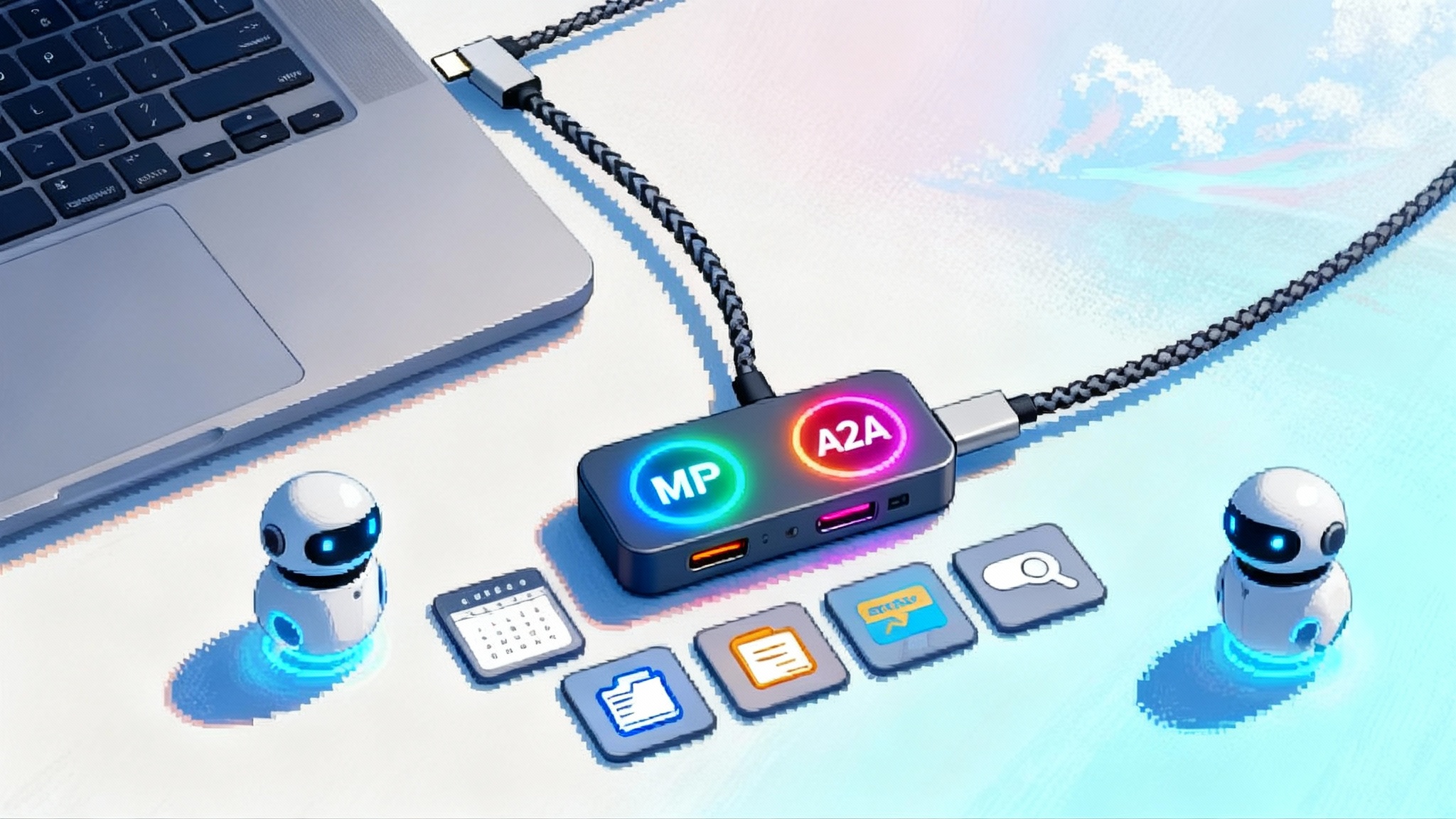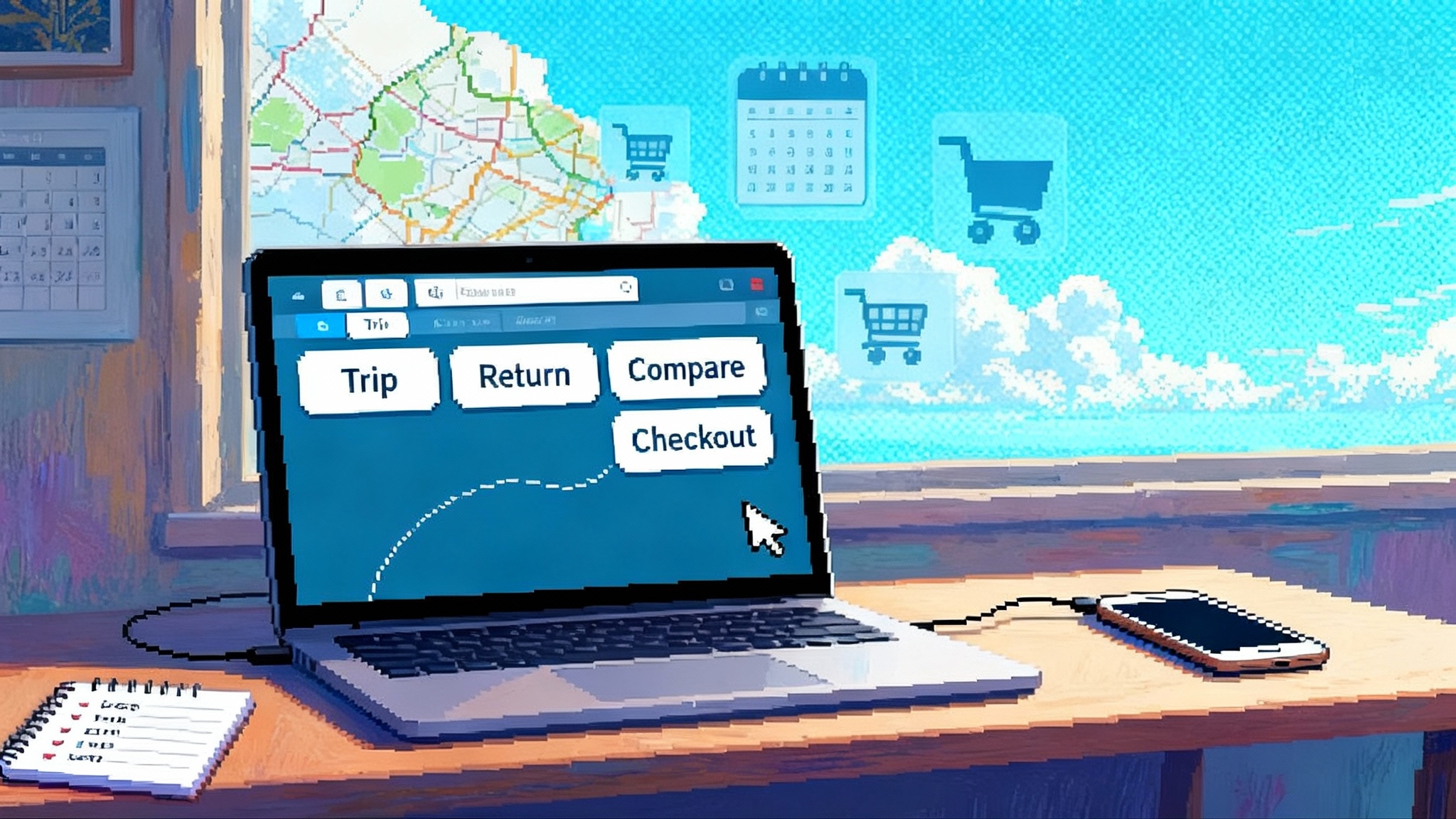Gemini for Home Turns Smart Homes Into Agent Platforms
Google is turning smart homes into actionable agent platforms. With Gemini for Home, a redesigned Home app, and Home Premium with Gemini Live, households gain communal identity, context-aware automation, and integrations that let agents plan and act across rooms. Here is what changed, why it matters, and how startups can move first.

Summary
Smart homes are shifting from voice-driven gadgets to agent runtimes that can plan, act, and learn across people, rooms, and routines. Google’s Gemini for Home, the redesigned Home app, and a new Home Premium tier with Gemini Live bring communal identity, context-aware automation, and a standardized integration layer to the mainstream. These building blocks make agents trustworthy and useful for everyday families. Startups have a near-term window to ship agent-native services, local privacy extensions, and trust infrastructure. The winners will prove value with receipts, replays, and one job that improves daily life.
Agents just moved in
There is a moment in every platform shift when the experience stops feeling like a neat demo and starts behaving like a system you can rely on. With the rollout of Gemini for Home, a redesigned Google Home app, and a new Home Premium tier that unlocks Gemini Live, that moment arrived for the smart home. What used to be a web of devices with a voice remote now looks like a home runtime for agents that can plan, act, and learn across people, rooms, and routines.
Think about a typical weekday at 5:30 p.m. The old assistant would wait for a command. The new agent notices that two phones crossed the geofence, the oven preheat just finished, the air quality is worse than usual because the windows are open, and the calendar says soccer pickup is at 6:15. No one says a magic phrase. Gemini for Home proposes a plan: start a 12 minute bake, nudge the air purifier to high, send a shared notification to the household chat, and queue the car seat reminder for whoever leaves first. Someone taps yes, and the home executes. That is not a better voice interface. That is an agent in the loop.
What changed is not one feature. It is three architectural shifts that finally snapped into place for a mass audience: a communal identity model, context-aware automation that watches the state of the home, and an integration layer that speaks the Model Context Protocol, or MCP, so the agent can reach many tools without bespoke glue on every project. For a deeper dive on the standard, see why MCP and A2A go mainstream [/usb-c-moment-ai-agents-mcp-a2a-go-mainstream]. Together, these shifts turn scattered home gadgets into a usable platform.
The household is the account, not the individual
Smart homes have long suffered from a single-user bias. One person pairs the devices, and everyone else shouts requests at an account they do not control. Gemini for Home flips this by treating the household as a first class identity with roles, consent, and a shared memory. The app asks who is home, who is allowed to approve purchases, which screens can show photos, and how to handle children’s voices. The home becomes a multiplayer space with permissions rather than a single owner with guests.
This communal identity is more than niceties. It is the data model that lets an agent make judgments. A request like start homework mode means different lighting, timer rules, and website filters for different children. A request like accept the package for the neighbors depends on whether anyone with the right role is present to take responsibility. By anchoring actions to known people, rooms, and devices, the agent can produce plans that feel helpful instead of creepy. For context on why memory and identity matter, see the new data layer for autonomy [/agent-memory-wars-the-new-data-layer-for-autonomy].
The practical payoff is fewer brittle routines. Instead of one giant ritual per person, the system composes small policies by role. Parents can approve spending. Teens can run scenes in shared spaces but not in the garage. Guests can control lights in their room and the hallway. When someone new joins for a month, the home does not need a full reprogram. You add them to the household, pick a role, and the agent knows what to do.
Context-aware automation is the missing superpower
Old assistants waited for commands. Context-aware automation gives agents the canvas to act. Gemini for Home treats the house as a set of live signals. Presence from phones and wearables. Motion from sensors. Energy price windows from your utility. Noise and light levels from speakers and cameras. Cooking stages from the oven. Door events from locks. A dozen small signals that, when fused, tell the story of the home.
The magic shows up in blended scenarios. You say set the table timer for 15. The agent sees a rain alert and shifts the garden watering start time so that the sprinklers do not overlap with the kid getting the plates. You start a video call and the room dims. The front door rings and the agent catches a family member’s glance on the hallway display, then opens a private camera view to the nearest phone with permission. None of this requires a perfect model of human life. It just needs a consistent way to sense, decide, and act.
Key capabilities to design around:
- State fusion. Agents work best when they combine many low fidelity signals into one decision. Presence, time of day, and device state should be treated as ingredients, not separate rules.
- Time-bounded plans. The agent proposes a plan with a clear end, like quiet mode until the baby wakes. Temporary states prevent the house from getting stuck.
- Graceful fallbacks. Every plan should degrade safely. If the internet drops, the home should keep lights and locks on local control and queue actions until connectivity returns.
Why MCP-compatible integrations matter
A home agent is only as useful as the tools it can reach. MCP gives that reach without a tangle of bespoke adapters. In plain terms, it is a way for an agent to discover tools, ask what they can do, pass context, and receive results in a predictable format. It is like device drivers for agent skills. If a grocery service, a solar inverter, or a calendar speaks MCP, the agent can learn how to use it on the fly.
For developers this means two practical wins. First, you build your integration once and it runs across agent surfaces, from the living room display to a phone car mode. Second, the permission prompts look and feel consistent. When the agent asks for access to your garage door tool, the user sees the same verbs and the same scoping model they saw for the weather service last week. That uniformity reduces fear and speeds adoption.
For households this means the long tail finally shows up. Niche services, like a local dry cleaner with pickup windows or a neighborhood energy co-op, can ship MCP connectors that the home agent understands on day one. The agent fills forms, fetches schedules, and checks status without someone becoming the household integrator in their spare time.
The first mass consumer agent platform
We have had agent prototypes for years. What makes this the first credible mass platform is not the smartest conversation model. It is distribution plus the right execution privileges.
- Installed base. The Google Home app and Nest devices are already present in millions of homes. A platform needs a front door that people already use.
- A runtime with hands. The agent can control lights, locks, thermostats, media, cameras, and scenes, and can compose those controls with cloud services through MCP connectors. That gives it real reach.
- Clear consent moments. Household roles and shared prompts make it obvious who approved what. Recurring approvals are scoped and auditable. Trust flows from predictability.
- A developer surface. Gemini Live and Home Premium provide a revenue path for agents that do real work. If a service saves energy or time, it has a way to get paid.
When you put those together, you get a platform that is ready for everyday families, not just enthusiasts with a rack in their closet.
A startup playbook for the agent-native home
Founders now have a window between October 2025 and March 2026 to plant flags before the agent patterns harden. Here are three lanes with concrete moves.
1) Agent-native home services
Build services that assume an agent will request and confirm, not a person tapping through screens.
- Last meter delivery. Accept packages, verify contents with a camera, and stage returns. The agent handles vendor chat and schedules porch pickup automatically.
- Energy arbitrage for normal people. Shift heavy loads into off-peak windows and trade battery storage with neighbors. The agent optimizes within comfort limits, then shows savings in a weekly household report.
- Chores as a contract. Offer a subscription that guarantees dinner on the table by 7 on weeknights. The agent coordinates grocery delivery, preheats, and timers, and messages the family when help is needed.
How to win: use MCP for service discovery, publish clear guarantees, and expose refund triggers in the agent’s logs so families trust the automation.
2) Privacy-preserving local extensions
Some tasks are too sensitive or too latency dependent for the cloud. Build local skills that run on hub devices, desktops, or dedicated edge hardware.
- On-device video redaction. Process camera feeds locally to detect people, blur faces, or redact names on packages before anything is stored or shared.
- Room-aware media. Cache profiles on local speakers so bedtime or focus modes kick in even if the internet is down.
- Family data vaults. Keep health, school, and finance documents on a local encrypted store. The agent gets a temporary, scoped capability to fetch just what it needs, then the key expires.
How to win: advertise local skills through MCP with a clear tag that signals data never leaves the home. Provide a one tap export of audit logs so households can prove what happened if something goes wrong.
3) Verification and trust infrastructure
As agents act, households will ask a simple question: did this really happen the way the app says it did? Build tools that make the answer easy. For background on the category, see agent observability and control planes [/agent-observability-arrives-building-the-control-plane-for-ai].
- Signed receipts for actions. Every consequential action, like unlocking a door, includes a signed receipt with actor, time, location, and scope. Store it locally and optionally back it up to a privacy preserving cloud.
- Independent plan validators. Before the agent buys anything, a validator checks plan cost against a household budget and flags outliers like a surprise delivery fee.
- Incident replays. A visual timeline that lets families replay the last two hours of state changes in the home to debug a misfire without calling support.
How to win: ship a human centered interface that nontechnical users can understand in ten seconds. Trust infrastructure is a product, not a back office log.
Product patterns that separate winners
If you are building on this platform, design for these realities.
- Two word commands are normal. People say start dinner and expect the agent to infer the rest from context. Make intents broad and rely on state fusion.
- Recovery beats perfection. Build a cancel and revert option into every action. Make it easy to undo the last five minutes.
- Idempotent actions. If a plan retries a request, it should not duplicate a purchase or trigger another scene. Design calls so that repeated messages lead to the same result.
- Tight timeouts. Agents should ask for help quickly when a device does not respond. People forgive a question faster than a silent failure.
- Human in the loop for money and locks. Require explicit approval on shared screens for purchases or access changes. This keeps trust high without slowing simple tasks.
How Amazon and Apple answer by March 2026
Expect both incumbents to respond within two quarters, which means visible moves between November 2025 and March 2026.
Amazon
- A family graph. Alexa learned households informally through voice profiles. Expect a formal communal identity with roles, spending caps, and a shared memory that travels across Echo devices.
- Context plans tied to Prime. Amazon will likely bundle an agent tier with Prime that handles deliveries, returns, and Whole Foods orders as a unified flow. The agent will reconcile substitutions in the kitchen rather than in the cart.
- Developer push through AWS. Tooling to host agent skills on Amazon Web Services with built in logs, testing, and policy prompts. Amazon will court logistics, energy, and media partners who want instant distribution.
- Hardware refresh. Expect far field microphones with better wake word accuracy and a smart display that behaves like a household status board out of the box.
Apple
- Privacy first agent patterns. Apple will lean on on-device processing through Private Cloud Compute and ship a set of default scenes that show obvious value without requiring deep setup. Think travel days, school nights, and dinner prep.
- Role based HomeKit. A formal family role system with granular consent prompts and clear visual indicators on devices, especially shared screens and HomePods.
- App Intents for home control. Expect a push for developers to expose household actions through Apple’s intent framework, even if Apple does not adopt MCP directly. The result will feel native, with tight control over permissions and no surprises.
- Strong ties to Messages and Calendar. Plans and approvals will land in the family thread where people already coordinate, with a quick way to see or undo actions.
These responses will help the entire category. They will normalize the idea that a home agent can act, but must do so inside clear, human legible constraints. Competition will improve reliability and push down pricing, while making the consent model familiar across platforms.
What to build in the next 90 days
If you want to ride this wave, treat the next quarter as a sprint to ship a wedge product that gets a household to say yes once. Use this checklist.
- Pick one painful moment. Dinner prep, bedtime, morning scramble, dog care, or package handling. Do not chase a general assistant.
- Draft a two minute plan. Write the sequence your agent will propose. Include sensors, device actions, and at least one external tool connected with MCP.
- Define two clear approvals. One for routine actions, one for money or access. Wire them into shared screens and phones in the household.
- Ship logs and replays on day one. Build the trust layer at the start. Your support load will collapse when users can see what happened.
- Measure saved minutes and avoided mistakes. Put the gains in a weekly summary that is easy to read. People stick with agents that prove value.
The takeaway
The smart home used to be a loose confederation of gadgets with a polite voice at the front. Gemini for Home turns it into an agent platform with a household identity, live context, and a common language for integrations. That changes who can build, what can ship, and how families will expect their homes to behave. The winners will design for a shared space, prove trust with receipts and replays, and pick one job that matters every single day. The first agents that earn a spot in the evening routine will own the next wave.








